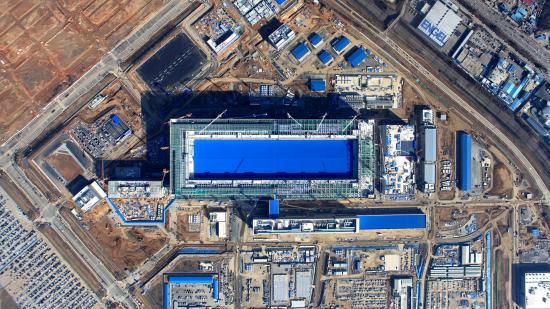Samsung is looking to regain the top spot as the world’s largest semiconductor manufacturer as it closes the gap on current leaders Intel Q2, 2019. Reportedly due to renewed vigor in the memory market (read: less than catastrophic price crashes), the Korean tech giant is slowly easing its recent revenue misses and actually making money in the troubled memory market.
According to IHS Markit (via DigiTimes), Intel still retains the top spot as the biggest, baddest silicon manufacturer around, its revenue of $15.5bn over the last three months securing it the title for the third consecutive quarter. It won this title from Samsung last year when memory prices came crashing down to all-time lows.
NAND flash revenue was in a sharp, 35% decline during Q2, 2018, and SSDs are now cheaper than ever. While it’s still in decline, that decline has now eased to only 5% in 2019. That’s aided Samsung in bandaging its wounds somewhat and posting revenue for the quarter just short of $13bn. It’s still a little way off Intel, but its revenue is finally back on the rise and its got big plans to bolster its business elsewhere.
These plans may crank up the heat on Intel and TSMC, as Samsung recently announced it will be spending ungodly quantities of cash on its contract manufacturing business. The company already has a rather sizeable chip making business, but it hopes on competing head-to-head with the likes of TSMC and net itself some larger clients with its $115bn adrenalin shot. Yep, ungodly.
“Despite the fact that the memory chip market remains pressured by falling prices, weak demand and excess inventory, Samsung in the second quarter managed to find some growth opportunities for its memory products,” Ron Ellwanger, senior analyst at IHS Markit, says. “Samsung has started to see some recovery in NAND and DRAM memory due to strong demand for its high-density products from the mobile and storage segments. NAND sales specifically are benefiting from the higher adoption of solid-state drives in datacentres and from the arrival of new smartphones that have expanded memory content.”
And while Intel is finding success in many areas to keep it at the top of the pile, the latest news has AMD’s 2nd gen EPYC processors on a rampage to rid the datacentre of Intel parts. The red team has already announced Google and Twitter will be utilising its chips, and if momentum falls further in its competitors’ favour, Intel could find its place at the top in jeopardy.
